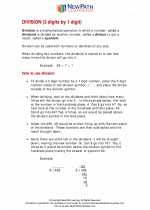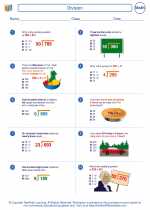Thermometer Study Guide
A thermometer is a device used to measure temperature. It consists of a long, narrow, uniform glass tube with a bulb at one end containing a liquid (usually mercury or colored alcohol) that expands or contracts with temperature changes. The temperature is indicated by the level to which the fluid rises in the tube.
Types of Thermometers
There are different types of thermometers:
- Mercury Thermometer: This type of thermometer uses mercury as the measuring fluid. It is commonly used in households and medical settings.
- Digital Thermometer: These thermometers use electronic sensors to measure temperature and display the results on a digital screen.
- Infrared Thermometer: This type of thermometer measures temperature from a distance using infrared technology. It is often used in industrial and medical applications.
Reading a Thermometer
When reading a thermometer, it's important to understand the scale being used. The most common scales are Celsius and Fahrenheit:
- Celsius (°C): The Celsius scale is based on the freezing and boiling points of water, with 0°C representing the freezing point and 100°C representing the boiling point at sea level.
- Fahrenheit (°F): The Fahrenheit scale is commonly used in the United States. On this scale, the freezing point of water is 32°F and the boiling point is 212°F.
Using a Thermometer
When using a thermometer, it's important to follow these steps:
- Shake the thermometer to ensure the liquid is below the actual temperature.
- Place the thermometer in the desired location and wait for a few minutes for an accurate reading.
- Read the temperature indicated by the level of the liquid in the tube.
- Carefully clean and store the thermometer after use to ensure accuracy and longevity.
By understanding the different types of thermometers, reading temperature scales, and following proper usage techniques, you can effectively measure and monitor temperature in various settings.
[Thermometer] Related Worksheets and Study Guides:
.◂Math Worksheets and Study Guides Sixth Grade. Division
Study Guide Division
Division  Worksheet/Answer key
Worksheet/Answer key Division
Division  Worksheet/Answer key
Worksheet/Answer key Division
Division  Worksheet/Answer key
Worksheet/Answer key Division
Division 

 Worksheet/Answer key
Worksheet/Answer key
 Worksheet/Answer key
Worksheet/Answer key
 Worksheet/Answer key
Worksheet/Answer key

The resources above cover the following skills:
Connections to the Grade 6 Focal Points (NCTM)
Number and Operations: Students' work in dividing fractions shows them that they can express the result of dividing two whole numbers as a fraction (viewed as parts of a whole). Students then extend their work in grade 5 with division of whole numbers to give mixed number and decimal solutions to division problems with whole numbers. They recognize that ratio tables not only derive from rows in the multiplication table but also connect with equivalent fractions. Students distinguish multiplicative comparisons from additive comparisons.